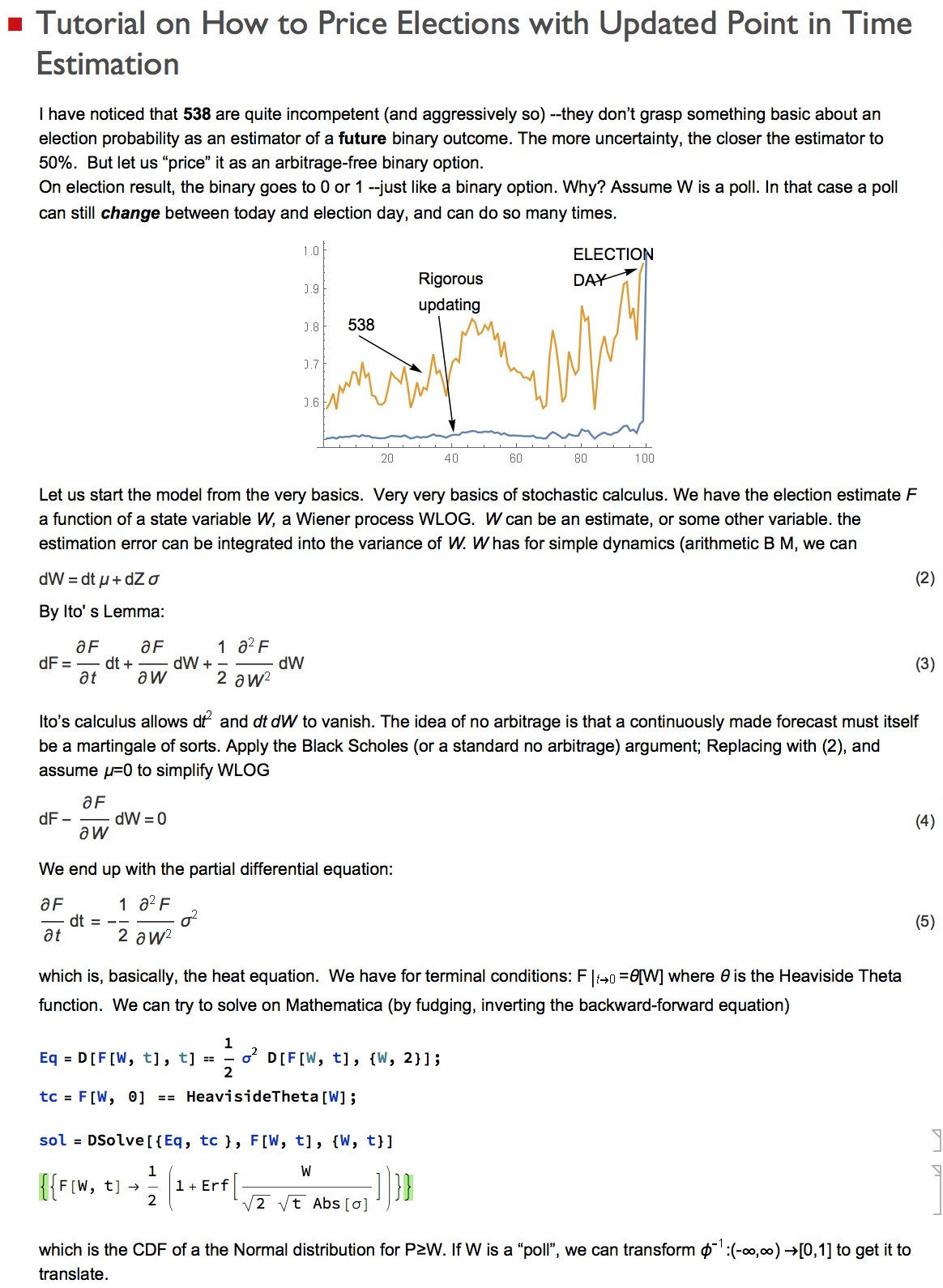Common sense in that the probability of a win at any given time during the election cycle should be dominated by future uncertainty, rather than current uncertainty. So the probability of either outcome is close to 50% up until right before the election occurs. During early August, Silver had the probability of Trump winning the election at 2%. I think you'd be hard pressed to find anybody except for maybe the rjkarls of the world that believe that if you ran 100 simulations of the election from early August on that Trump would win twice. Going by Silver's model, the statistical likelihood of Trump even being at this point is astronomically small. Not sure how you could possibly take issue with that critique.
Nate Silver is undoubtedly a smart person, but his credibility comes into question when he does stuff like arbitrarily give Trump a 5% of winning the nomination, reasoning that there are four "stages" of the nomination (again, arbitrarily determined by him) and Trump has a 50% chance of clearing each of them.
As for whether or not a binomial process is appropriate, I was always more at home with deterministic systems, and my probability theory is admittedly rusty, so since I feel little compulsion to brush up on it to defend someone else's model on the Internet, especially while there is football on, I will concede that point. In my estimation this doesn't really have any impact on the nature of the critique, but I'm happy to be corrected on that front.

